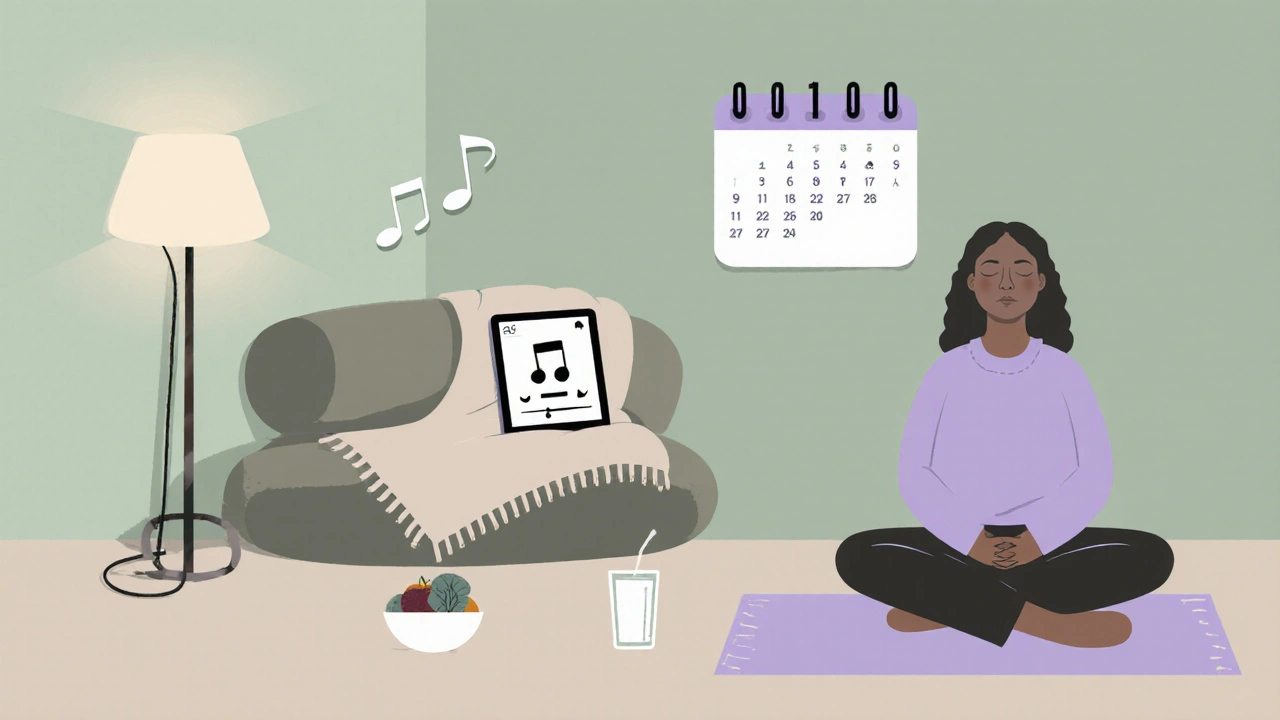Mental Health Crisis Support Guide
Look for persistent changes lasting more than two weeks:
- Emotional shifts: sudden sadness, irritability, or numbness
- Behavioral changes: withdrawing from friends, neglecting work, or risky actions
- Physical clues: trouble sleeping, unexplained aches, or drastic weight changes
If you notice flashbacks, hyper-vigilance, or avoidance after a traumatic event, consider PTSD.
Use gentle, non-judgmental language:
- "I've noticed you've seemed really down lately, and I'm worried about you."
- "When you said you didn't want to see anyone, it made me think you might be feeling overwhelmed."
Ask open-ended questions like:
- "Can you tell me what’s been going on?"
- "How are you feeling about the situation?"
Practice active listening: maintain eye contact, nod, and reflect back what you hear.
Replace vague offers with concrete actions:
- "I can pick up groceries on Thursday."">
- "Would you like me to walk you to your therapist's office?"
- "I'll set up a calming playlist for you tonight."
Keep a short checklist so you don't overpromise. Ask "What would make today a bit easier for you?"
Help them access resources:
- Normalize therapy by sharing positive stories
- Provide a list of local services, tele-health platforms, and community clinics
- Assist with logistics: filling out forms, arranging insurance questions, booking appointments
- Offer to accompany them to their first session
If they express thoughts of self-harm or suicide, call the national crisis line (13 11 14 in Australia) or go to the nearest emergency department.
Supporting someone can drain you quickly:
- Schedule regular self-care activities that replenish physical, emotional, and mental energy
- Set clear boundaries: it's okay to say, "I'm not able to talk right now, can we check in later?"
- Seek your own therapist or a support group if the load feels heavy
Remember, you're a partner in the journey, not a rescue worker.
Quick-reference for immediate action:
- Identify any red-flag signs (suicidal thoughts, severe self-harm)
- Plan a calm, private conversation using the scripts above
- Offer two concrete forms of help today
- Gather contact info for a local therapist or tele-health service
- Save the crisis line number (13 11 14) and the nearest emergency department address
- Schedule a personal self-care activity for each day you assist them
Key Takeaway
By turning empathy into action, you become a steady anchor during a storm. It won’t solve everything overnight, but every small step adds up to a safer, healthier future for both of you.
This guide emphasizes practical strategies to support someone in mental health crisis while maintaining your own well-being.
Quick Takeaways
- Spot early signs without jumping to conclusions.
- Use open‑ended questions and active listening to start the dialogue.
- Offer specific help - chores, appointments, or a calming routine.
- Encourage professional help while respecting the person’s pace.
- Don’t forget your own well‑being; burnout hurts both of you.
When someone you care about starts struggling with their mental health is a state of emotional and psychological well‑being that influences how we think, feel and act, it can feel like the ground shifts beneath you. You want to step in, but you’re not sure what to say or do. This guide walks you through the practical steps that turn good intentions into real help, from recognizing the earliest signals to keeping yourself safe and sane.
1. Recognize the Signs That Matter
Not every mood dip signals a deep‑seated issue, but certain patterns tip the scale toward a mental‑health concern. Look for persistent changes that last more than two weeks:
- Emotional shifts: sudden sadness, irritability, or numbness.
- Behavioral changes: withdrawing from friends, neglecting work, or risky actions.
- Physical clues: trouble sleeping, unexplained aches, or drastic weight changes.
Specific conditions have hallmark signs. For example, depression often includes hopelessness, loss of interest, and slowed thinking while anxiety shows up as constant worry, racing thoughts, and physical tension. If you notice flashbacks, hyper‑vigilance, or avoidance after a traumatic event, consider PTSD a disorder marked by intrusive memories and heightened startle response. Knowing these patterns lets you approach the conversation with facts, not guesses.
2. Start the Conversation Gently
Timing and tone matter more than the exact words you choose. Pick a quiet moment when you both have privacy. Begin with observations, not judgments:
- “I’ve noticed you’ve seemed really down lately, and I’m worried about you.”
- “When you said you didn’t want to see anyone, it made me think you might be feeling overwhelmed.”
Follow up with open‑ended prompts such as “Can you tell me what’s been going on?” or “How are you feeling about the situation?” This invites them to share at their own pace. Practice active listening: maintain eye contact, nod, and reflect back what you hear (“It sounds like you feel trapped at work”). Avoid unsolicited advice; the goal is to validate, not fix.

3. Offer Practical, Tangible Help
People in distress often struggle with daily tasks. Replace vague offers (“Let me know if you need anything”) with concrete actions:
- “I can pick up groceries on Thursday.”
- “Would you like me to walk you to your therapist’s office?”
- “I’ll set up a calming playlist for you tonight.”
When you frame help as a specific, time‑bound task, it feels easier for your loved one to accept. Keep a short checklist so you don’t overpromise. If you’re unsure what would be most useful, simply ask, “What would make today a bit easier for you?”
4. Guide Them Toward Professional Support
Professional help is the cornerstone of lasting recovery. Yet many people fear stigma, cost, or the unknown. Here’s how you can smooth the path:
- Normalize therapy: Share stories of how a therapist a trained mental‑health professional who provides counseling or psychotherapy helped a friend or celebrity.
- Provide options: Offer a shortlist of local services, tele‑health platforms, and community clinics.
- Assist with logistics: Help fill out intake forms, arrange insurance questions, or book the first appointment.
- Stay involved: Ask if they’d like you to accompany them for the first session.
If the person expresses thoughts of self‑harm or suicide, act immediately. Call the national crisis line a 24/7 telephone service that offers immediate emotional support and suicide prevention (131114 in Australia) or go to the nearest emergency department.
5. Build a Supportive Environment at Home
Beyond one‑on‑one talks, the everyday atmosphere can either lift or press down on recovery. Try these low‑effort changes:
- Establish a routine: regular meals, sleep, and light exercise.
- Create a “quiet corner” with soft lighting, calming music, and no‑screen time.
- Limit exposure to triggering news or social media.
- Encourage community: invite a trusted friend or family member for a short visit.
A strong support network the group of friends, family, and professionals who provide emotional and practical assistance reduces isolation and builds resilience. Let the person know they’re not alone, and that asking for help is a sign of strength, not weakness.

6. Take Care of Your Own Well‑Being
Supporting someone else can drain you quickly. If you ignore your own needs, you risk burnout, which hurts both you and the person you’re trying to help. Schedule regular self‑care activities that replenish physical, emotional, and mental energy such as exercise, hobbies, or mindfulness breaks. Set clear boundaries: it’s okay to say, “I’m not able to talk right now, can we check in later?” Seek your own therapist or a support group if the load feels heavy. Remember, you’re a partner in the journey, not a rescue worker.
7. Quick‑Reference Comparison Table
| Do | Don't |
|---|---|
| Listen without interrupting. | Minimize their feelings (“It’s not that bad”). |
| Offer specific help. | Make vague offers that are easy to decline. |
| Encourage professional care. | Suggest they can “just get over it”. |
| Maintain your own routine. | Neglect your own health. |
| Respect privacy and consent. | Share details without permission. |
8. Resources and Next Steps
Here’s a short checklist you can print or save on your phone:
- Identify any red‑flag signs (suicidal thoughts, severe self‑harm).
- Plan a calm, private conversation using the scripts above.
- Offer two concrete forms of help today.
- Gather contact info for a local therapist licensed mental‑health professional or tele‑health service.
- Save the crisis line number (131114) and the nearest emergency department address.
- Schedule a personal self‑care activity for each day you assist them.
By turning empathy into action, you become a steady anchor during a storm. It won’t solve everything overnight, but every small step adds up to a safer, healthier future for both of you.
Frequently Asked Questions
How can I tell if my loved one’s problem is an emergency?
If they talk about suicide, have a plan, or show self‑harm behaviors, treat it as an emergency. Call emergency services (000 in Australia) or the crisis line right away.
What if they refuse to see a therapist?
Respect their autonomy but keep the door open. Offer information, suggest low‑pressure options like a single tele‑health session, and continue to check in regularly.
Can I give them medication?
Never give prescription meds without a doctor’s order. If they’re already on medication and miss doses, encourage them to contact their prescriber.
How do I avoid burnout while supporting someone?
Set clear boundaries, schedule daily self‑care, and seek your own support network or therapist. Remember, you’re helping, not rescuing.
Are there free mental‑health services in Australia?
Yes. Services like Lifeline (131114), Beyond Blue, and local community health centers offer free counseling and crisis support.
